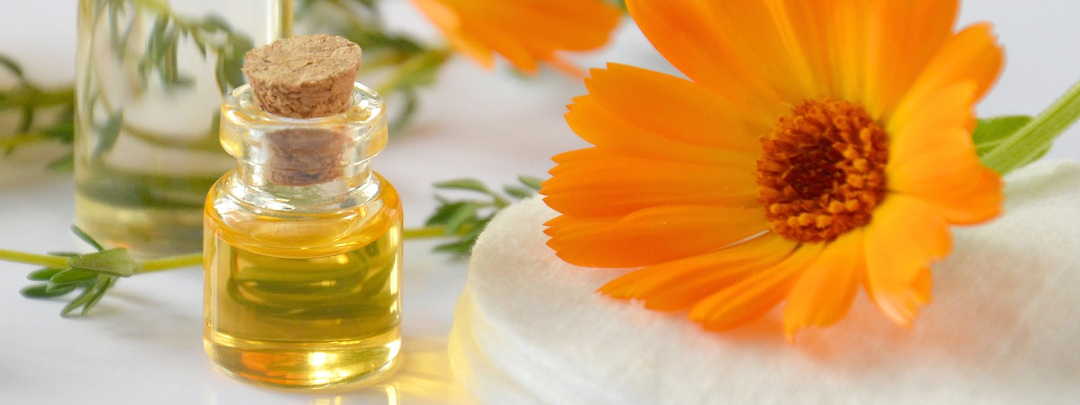Essential oils are aromatic, highly concentrated distilled essences, or extracts, from the leaves, stems, flowers, bark, roots, or other parts of a plant.
What are essential oils made of?
Essential oils have a unique chemical composition of terpenes, esters, oxides, alcohols, phenols, ketones, and aldehydes. These interact with the bodily systems when the essential oil is inhaled or applied.
It is important to note that pure essential oils are not like perfumes or fragrances. Perfumes and fragrances are artificially created and contain synthetic substances. These chemical reproductions are not as effective and do not evoke the same biochemical response as natural essential oils.
How do essential oils work?
The study and use of essential oils in aromatherapy and other practises are based upon the sciences of chemistry, botany, physiology, and psychology.
The oils are used by plants for a number of functions, including:
- Attracting pollinators and dispersal agents
- Playing a role in allelopathy, a type of plant-to-plant competition
- Serving as defense compounds against insects and other animals
- Protecting the plant through antifungal and antibacterial properties
When used by a human, it can offer similar antibacterial and anti-inflammatory properties as well as promote relaxation.
Essentials oils are volatile. This means that they evaporate easily and their molecules are released into the air as vapor. When we inhale, these molecules are absorbed into the bloodstream via the lungs and nose, and then travel to the limbic system of the brain. This part of the brain is responsible for critical functions, including integration and expression of feelings, learning, memory, emotions, and physical drives.
During external application, the essential oils are applied to the skin. The skin is slightly permeable, so when essential oils are applied topically, they are absorbed and then carried to the muscle tissue, joints and organs. The molecules then pass through the system to the kidneys, bladder, skin, and/or lungs for excretion.
During these processes, the components in the essential oils interact with the body to help in:
- Stimulating the immune system
- Aiding cell growth
- Eliminating toxins and bacteria
- Balancing skin conditions
And more.
The exact effect depends on the essential oil used. For instance, lavender oil has the ability to evoke and increase the release of serotonin in the body when inhaled. A calming effect is then produced.
Other essential oils, such as peppermint can be externally applied, particularly through baths or oral care products, to help in digestion, reduce symptoms of irritable bowel syndrome, reduce fatigue, improve mood, and promote better sleep.
How are essential oils made?
A variety of methods are used to extract the oils from the botanical material, such as:
- Distillation
- Solvent extraction
- Carbon dioxide extraction
- Expression (pressing)
- Enfleurage (a process in which some type of odourless oil is used to extract essential oil from flower petals)
The process that is best depends on the type and part of the plant.
How do I use essential oils?
There are three main types of applications:
- Aerial diffusion
- Direct inhalation
- Topical application
Aerial diffusion involves having the oils evaporate into the air by using an essential oil diffuser, a scent pod, a humidifier, or a boiling pot of water.
Direct inhalation involves smelling directly out of the bottle.
Topical application involves having the oils applied to the skin, often through massages, baths, and skin care.
Some essential oils may also be taken orally, through ingestion.
When using essential oils, it is generally recommend to dilute them since they are highly concentrated and potent. This is done by adding a small amount of oil to a base before applying or inhaling it.
The base usually consists of an another oil, referred to as a carrier oil. Carrier oils include almond oil, avocado oil, apricot oil, grape seed oil, jojoba oil, olive oil, and sunflower oil.
For inhalation, you can inhale directly from the bottle, or you may have to use a special device such as an aromatherapy lamp, diffuser, or simmer pot.
For external application, you can apply the diluted essential oil directly to your skin. You can rub it in like a regular lotion, or you can massage it in. Massage does help increase the circulation, which in turn helps in the absorption of the essence.
Some people choose to ingest essential oils, but this is only recommended for people who have extensive knowledge and experience in the area, since they are working with highly concentrated essences.
It is also recommended that you don’t use oils near the eyes, mucous membranes, or other sensitive areas. Be cautious about using essential oils during pregnancy or for children. That doesn’t mean that they can’t use any, but that they should be particularly careful in what type of oils they are using and in what quantity. Avoid direct sunlight if using citrus oils, since they can make the skin sensitive.
How much essential oil should I use?
The amount of essential oil you will need for inhalation or application depends on the type of oil and your specific condition.
Sometimes oils can be blended together to get greater, or different, affects. This is often where an aromatherapist comes in. They have extensive knowledge and study in the area, and are able to blend oils according to the specific need, to get the greatest effect.
However, you don’t have to go to an aromatherapist in order to experience the benefits yourself. You can look into some of the common essential oils, such as lavender, cinnamon bark, peppermint, allspice, cedarwood, chamomile, cypress, eucalyptus, frankincense, geranium, grapefruit, hyssop, jasmine, juniper, lemon, madarin, lindin, orange, patchouli, pine, rosemary, sandalwood, tea tree, thyme, and ylang ylang.
Essential oils don’t have to be combined in order to experience the benefits. You can use a single essential oil to great effect.

